The highlight of today's stage was the crossing of the highest point on the Spanish Way of St. James, the pass 'Cruz de Ferro'. The climb was not as strenuous as I had imagined. Only in a few very steep places I had to push. It was very cold. On top in the fog it had only 8 degrees. Since I had no gloves with me - who thinks about it when he goes to Spain in the summer - my fingers suffered a bit when going downhill.
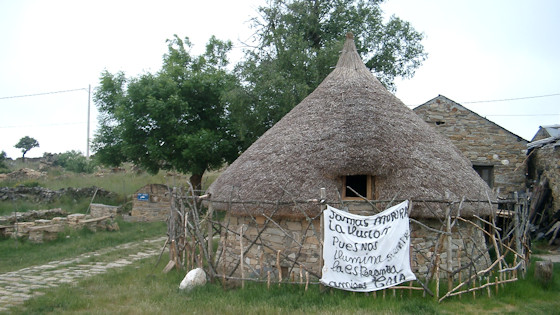
In the morning began the initially gentle climb to the Cruz de Ferro. Here past a traditional Spanish round house, a palloza.

With many curves it goes steadily uphill.
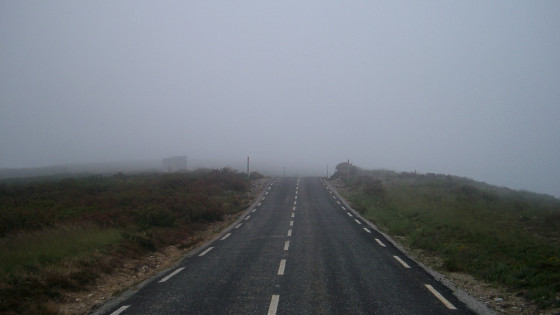
Early in the morning at temperatures around 8 degrees we go into the fog wall.
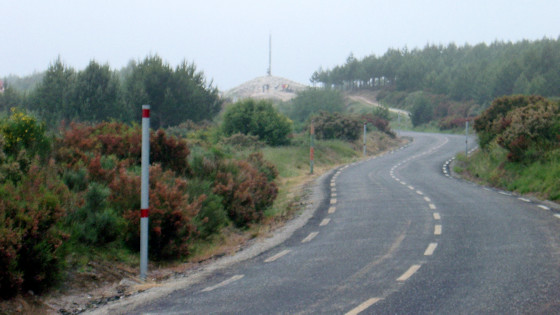
In the fog the Cruz de Ferro appears.
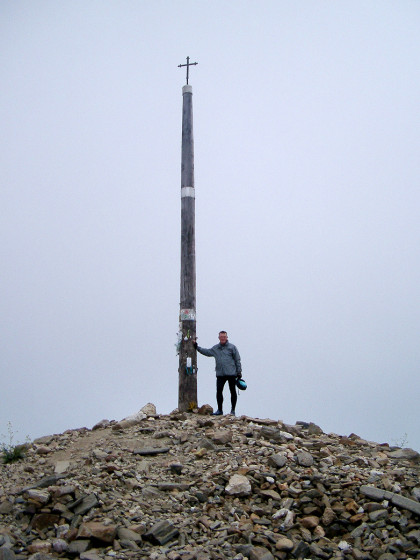
Cruz de Ferro, 1504 m.
The highest point of the Spanish Way of St. James.
Like all pilgrims, I also put a stone here.

The rapid descent passes this hostel in Manjarin with the much photographed signs - Santiago 222 km - a stone's throw!

Here in El Acebo de San Miguel pilgrims are just leaving.
The hostel is notorious for its poor service, but offers very good food. A monument at the end of the village commemorates the accidental death of a German bicycle pilgrim in 1987.

On the descent, I started to freeze. The fingers became quite stiff and I could no longer brake properly. Time for a short stop. This photo was taken in the process.
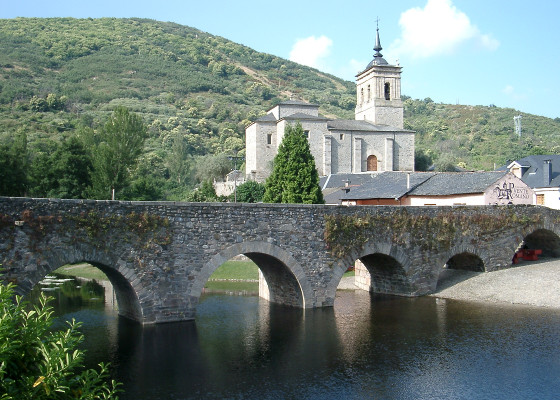
Once in the valley below, I found this beautiful Romanesque bridge over the Río Meruel at the village of Molinaseca.
Already with the Romans here was a rest house called Mansio and a horse changing place. In the town I drove through Calle Real, where there used to be a pilgrims' hospice and which used to be called Calle de los Peregrinos.
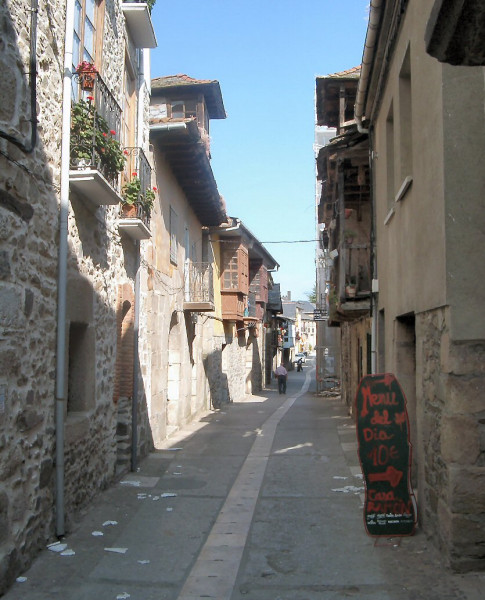
Passage through Molinaseca
Now it is only 8 km to Ponferrada. The entrance turned out to be a bit difficult. After eagerly studying the map, I finally got to the town hall square.
(Image below from the Internet)
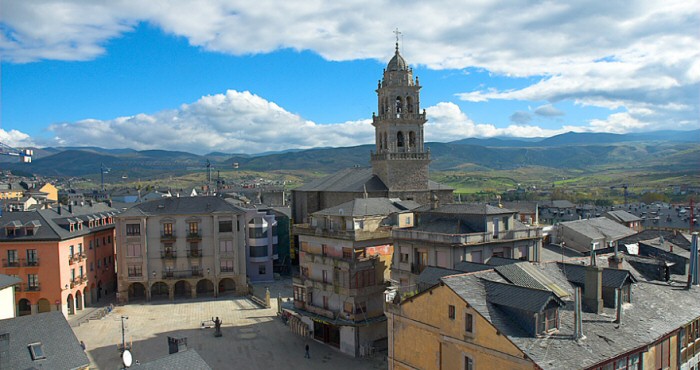

After the long descent I visited this castle in Ponferrada and slowly warmed up again in the sun.
The Knights Templar built this castle in the Middle Ages to protect the Way of St. James. From the outside, this fort corresponds to the ideal image of a castle. It looks like it was built from Lego bricks. Free entrance for pilgrims with pilgrim's pass.

zum Vergrössern auf das Bild klicken!
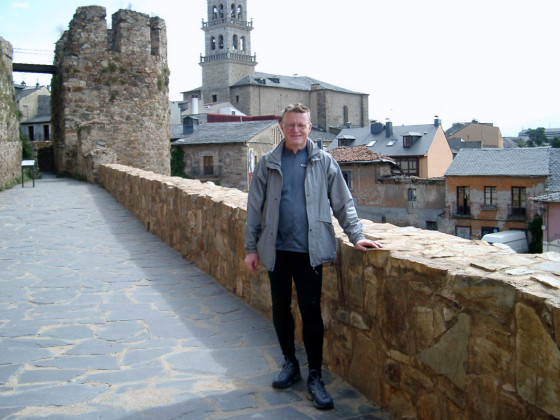
The walls are beautiful, but unfortunately there is not much left inside the castle.
Note my outfit. It is noon and over 30 degrees warm. From the descent I was so frozen out, I was still cold.
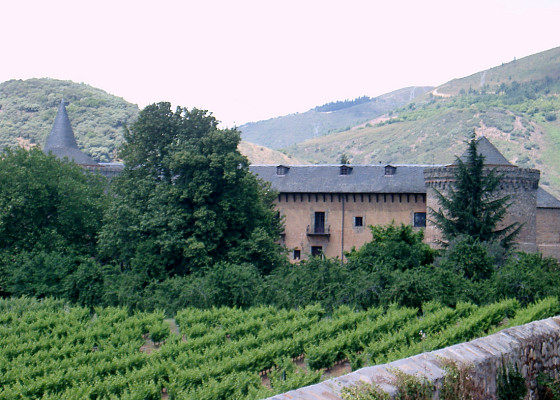
The ride continued for a long time via Villafranca del Bierco to Vega del Valcarce.
In the picture the castle in Villafranca from the 15th century with its bulging round towers.
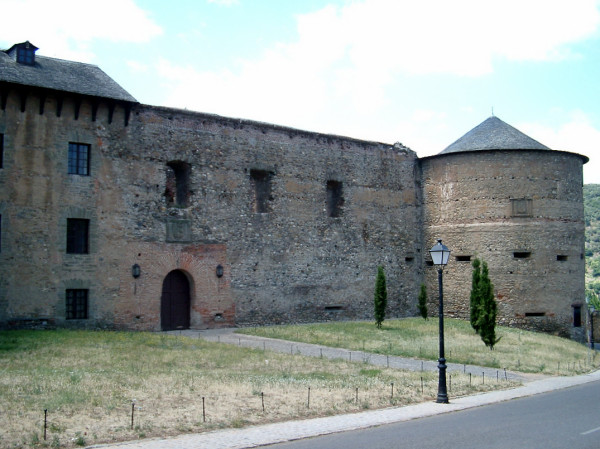

The hostel at the beginning of the village was quite simple. A large dormitory on the second floor (no bunk beds) was only accessible via an outside staircase, the dining and common room was on the first floor. To the toilets and quite simple showers you have to go outside because of the outside stairs. This was a bit uncomfortable because of rain and coolness.
In the evening the pilgrims met for dinner together.
Photos: Gerhard Eichinger

